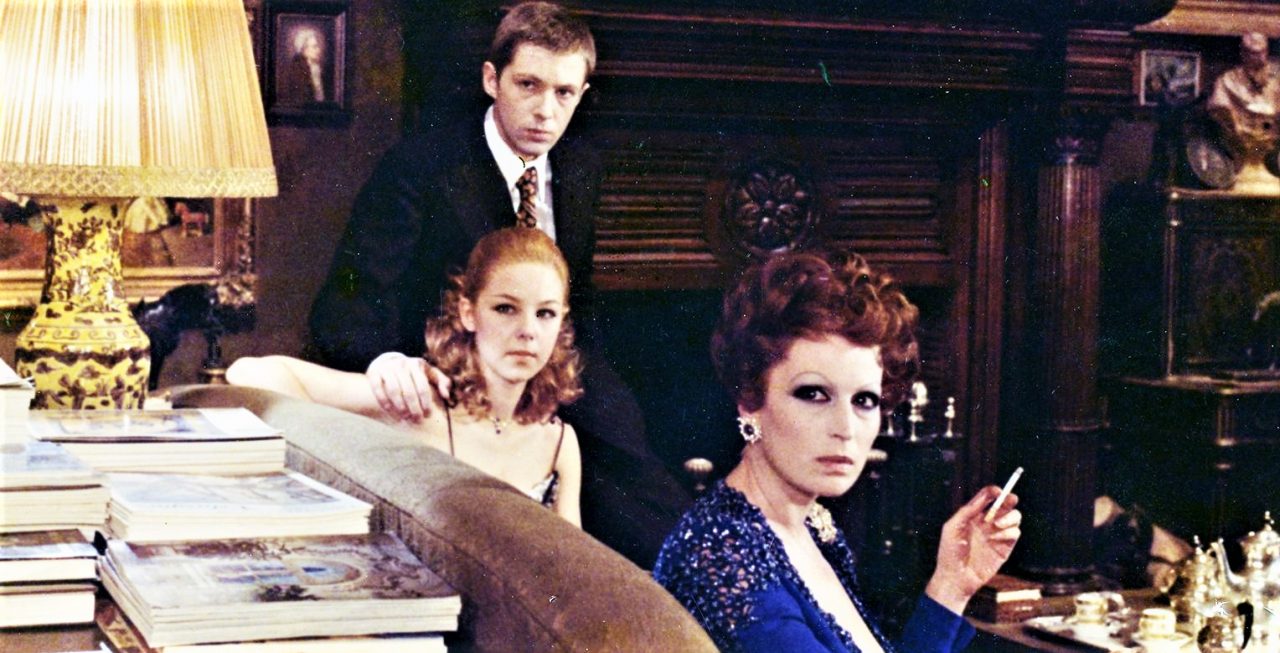Luchino Visconti’s Gruppo di famiglia in un interno (English title: Conversation Piece) is a compelling and introspective film that captures the essence of a transforming Italy in the 1970s. Released in 1974, this late work from the celebrated Italian director is an intricate, layered exploration of generational conflict, class divisions, and the personal consequences of political change. Set almost entirely within the confines of a single house, the film is a powerful meditation on identity, memory, and societal shifts, anchored by Visconti’s signature attention to visual detail and emotional complexity.
Plot and Themes
The story revolves around an elderly, cultured American professor (played by Burt Lancaster) living in voluntary isolation in a grand but faded Roman apartment. His quiet, controlled life is disrupted when a rowdy and intrusive Italian family, led by the manipulative but charismatic Marchesa Bianca Brumonti (Silvana Mangano), forces their way into renting the apartment above him. The professor, content with his solitude and memories, is suddenly drawn into the chaotic and emotionally charged lives of this new group of tenants.
Through this seemingly simple plot, Gruppo di famiglia in un interno becomes a rich allegory for Italy’s cultural and social upheaval. The professor, with his aristocratic tastes and nostalgic longing for the past, represents the old, dying world — a figure clinging to tradition and aesthetic ideals in the face of an aggressively modern and changing Italy. The Brumonti family, on the other hand, embodies the new generation: unruly, politically charged, and eager to break down the walls of the past. This tension between old and new, tradition and progress, is central to the film’s narrative.
Character Studies and Relationships
The strength of Gruppo di famiglia in un interno lies in its intricate character development and the dynamics between the professor and the Brumonti family. Burt Lancaster’s portrayal of the professor is nuanced and restrained, conveying a man deeply wounded by loss and detached from the present. His world is one of art, books, and quiet reflection, far removed from the social and political turbulence of the outside world.
Silvana Mangano’s Marchesa is the perfect foil to the professor’s isolation — vibrant, manipulative, and determined to insert her chaotic world into his ordered life. Alongside her are her lover Konrad (Helmut Berger), a volatile political radical, and her daughter Lietta (Claudia Marsani), who represents youthful rebellion. These characters bring with them a sense of instability and emotional chaos, forcing the professor to confront the world he has tried to shut out.
The relationship between the professor and Konrad is particularly significant. As a former revolutionary, Konrad challenges the professor’s worldview, embodying the generational divide that runs through the film. The two men, though seemingly opposites, share a strange, unspoken connection, as both are alienated from society in different ways. Visconti masterfully uses these character dynamics to explore themes of identity, displacement, and the inevitability of change.
Visconti’s Visual and Emotional Mastery
As with all of Visconti’s films, Gruppo di famiglia in un interno is visually stunning. The film is set almost entirely within the professor’s apartment, yet Visconti’s direction makes this confined space feel expansive, both emotionally and intellectually. The apartment itself becomes a character in the film — a representation of the professor’s inner life, filled with art, history, and memories. Visconti’s meticulous attention to set design and composition creates a world that is rich with symbolism, mirroring the internal struggles of the characters.
The contrast between the luxurious, antique-filled apartment and the disruptive modernity of the Brumonti family also highlights the film’s themes of cultural decay and renewal. The professor’s home is a refuge of the past, but it is ultimately invaded and transformed by the chaotic energy of the present.
Emotionally, the film is a study in restraint and repression. The professor’s quiet dignity masks a deep well of sadness and disillusionment, which Lancaster portrays with subtlety and grace. Visconti’s direction allows the emotions to simmer beneath the surface, slowly unraveling as the film progresses, building to a poignant and tragic conclusion.
A Reflection on Italy and Its Past
Gruppo di famiglia in un interno is not just a personal story about a man confronting his past — it is also a reflection on the broader societal changes happening in Italy during the 1970s. The film captures the sense of disillusionment and instability that permeated Italian society at the time, as political movements, generational shifts, and social unrest threatened the established order.
Through the figure of the professor, Visconti critiques the Italian bourgeoisie’s detachment from the realities of modern life. His retreat into the world of art and memory is a form of escapism, one that ultimately fails as the forces of change penetrate even his well-guarded sanctuary. The film questions whether it is possible to truly insulate oneself from the world, and whether the past can ever remain untouched in the face of an ever-changing present.
Gruppo di famiglia in un interno is one of Luchino Visconti’s most intimate and reflective works, offering a profound meditation on personal and societal change. The film is a masterclass in character-driven storytelling, with nuanced performances and a rich, symbolic visual language that deepens its emotional impact. At its core, the film is a study of the tension between tradition and modernity, a theme that resonates as strongly today as it did in 1974. Visconti’s ability to weave together the personal and the political makes Gruppo di famiglia in un interno a timeless exploration of human isolation, societal change, and the complexities of the human condition.
Watch the movie on Movieitaly+
Read more articles over here!






